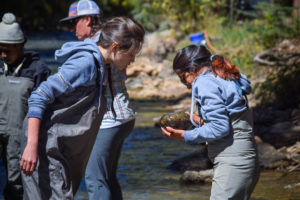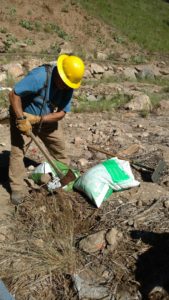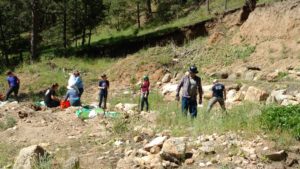Volunteers working to dislodge a disruptive beaver dam along Rock Creek drainage in Colorado. Image courtesy of: Basin+Bend.
On June 21, 2018, volunteers and Colorado Parks and Wildlife staff met between Fairplay and Grant, CO to work on helping take down beaver dams along the Rock Creek drainage. The Rock Creek drainage is a critical piece of the Greenback recovery puzzle and will provide nearly eight miles of connected stream habitat once the project is completed. With the help of Trout Unlimited volunteers and chapters, agency partners, and private landowners, there are 4.5 miles of stream that are currently being prepared for greenback reintroduction in the next 2-3 years. The project below will help make progress on the remaining 3.4 miles of critical habitat.
Last Thursday, volunteers focused on removing beaver dams from sections of the Rock Creek drainage in order to help CPW treat the area for Whirling Disease and non-native brook trout. Volunteers hiked up about a mile and used various tools to help dislodge the dams that were blocking creek flows. A huge thank you to all the volunteers for all their hard work, which resulted in the second scheduled day of work not being needed! Nice job, everyone! If you are interested in future projects, we have upcoming ones listed here.
To learn more about Native trout and restoration projects across Colorado check out our page here. Check out the great pictures taken by Erik Myhre of Basin+Bend in Evergreen, CO.

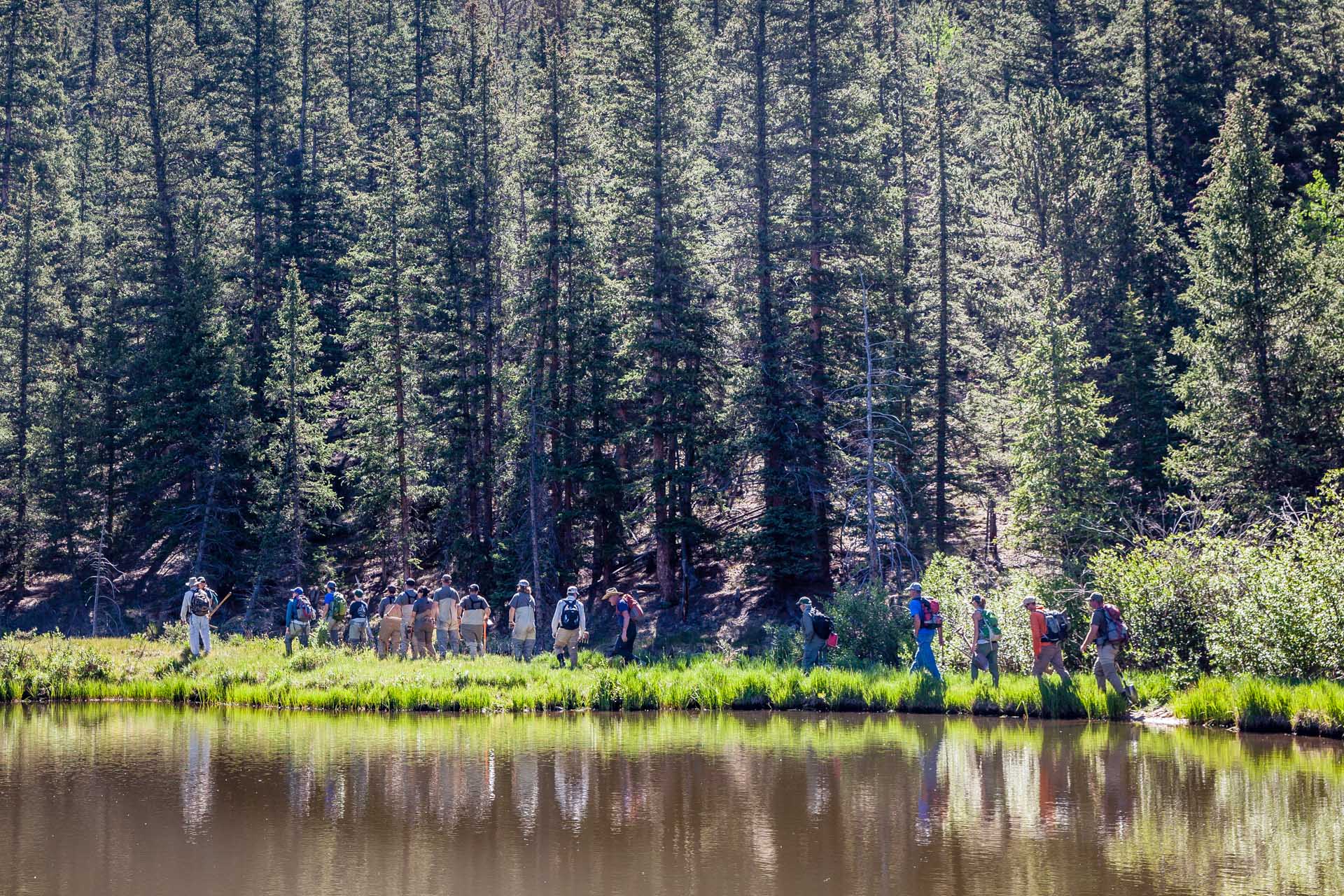
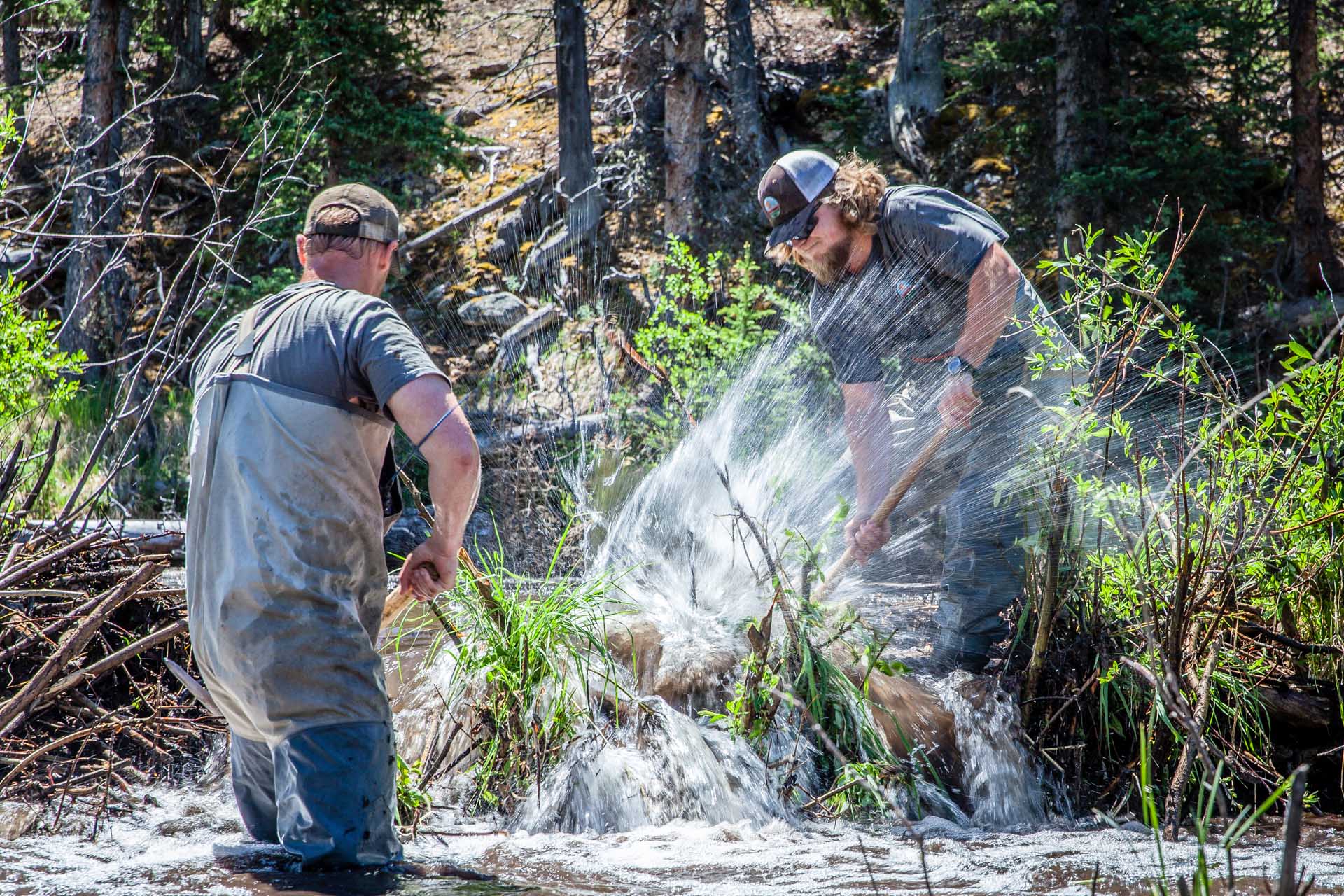
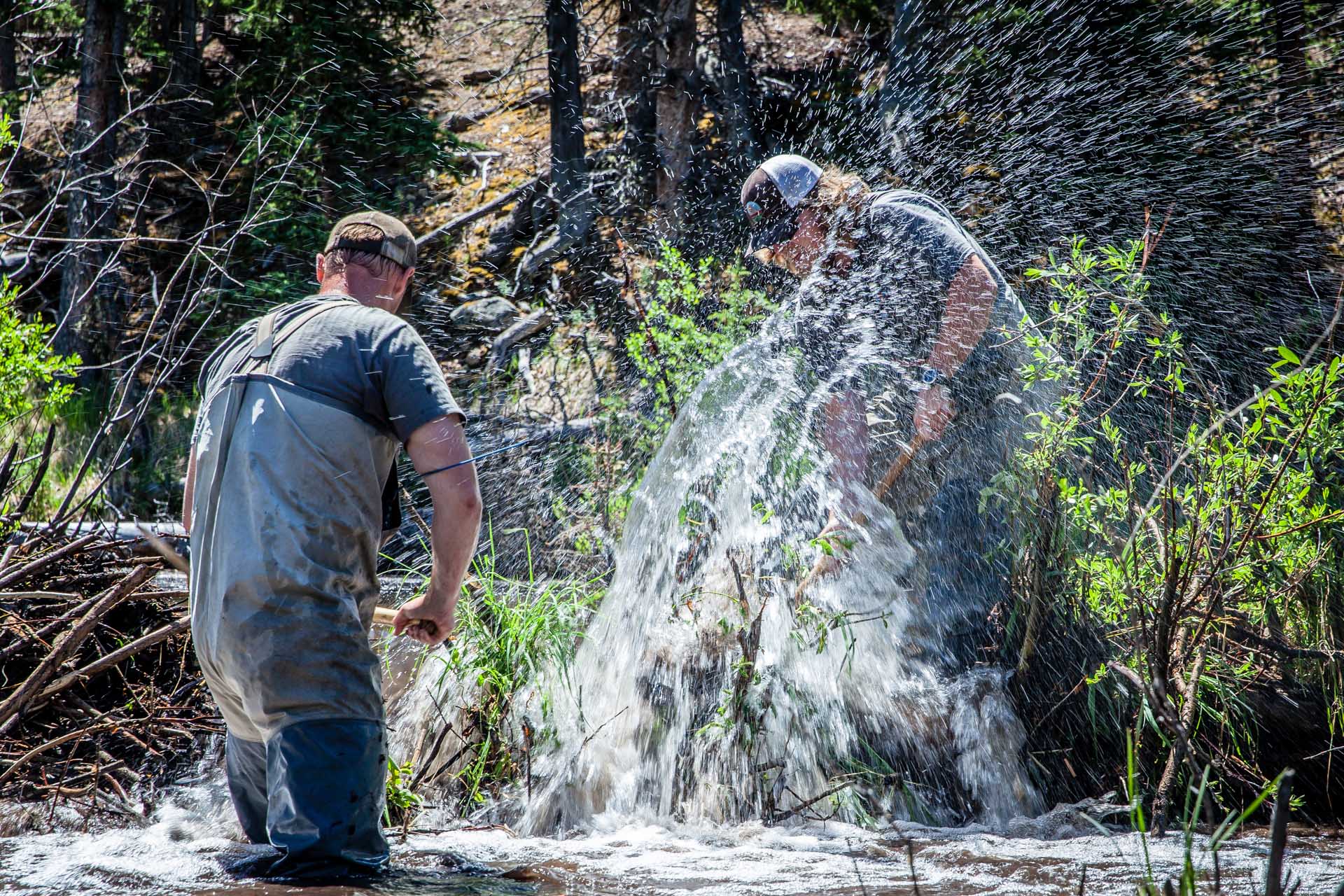
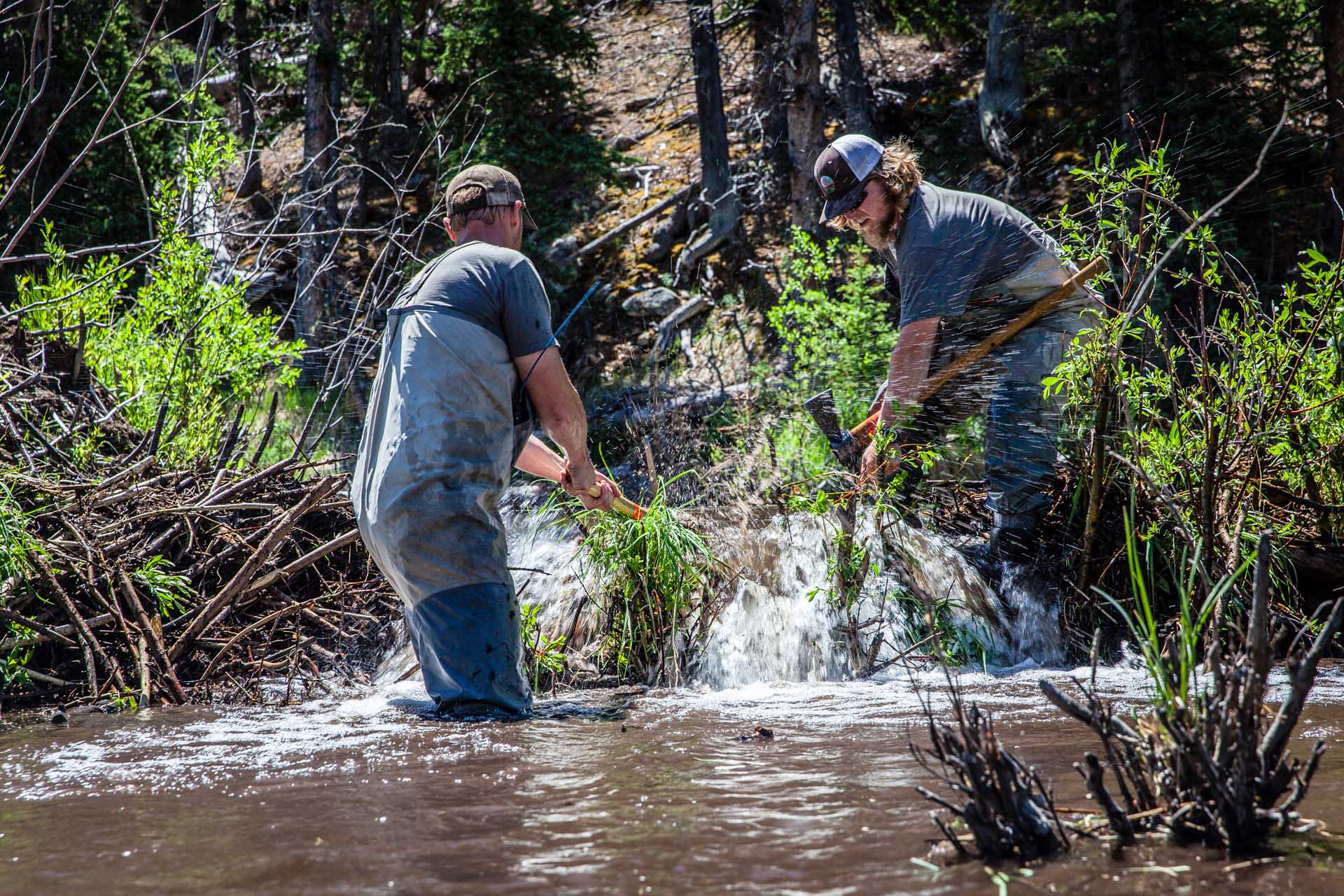
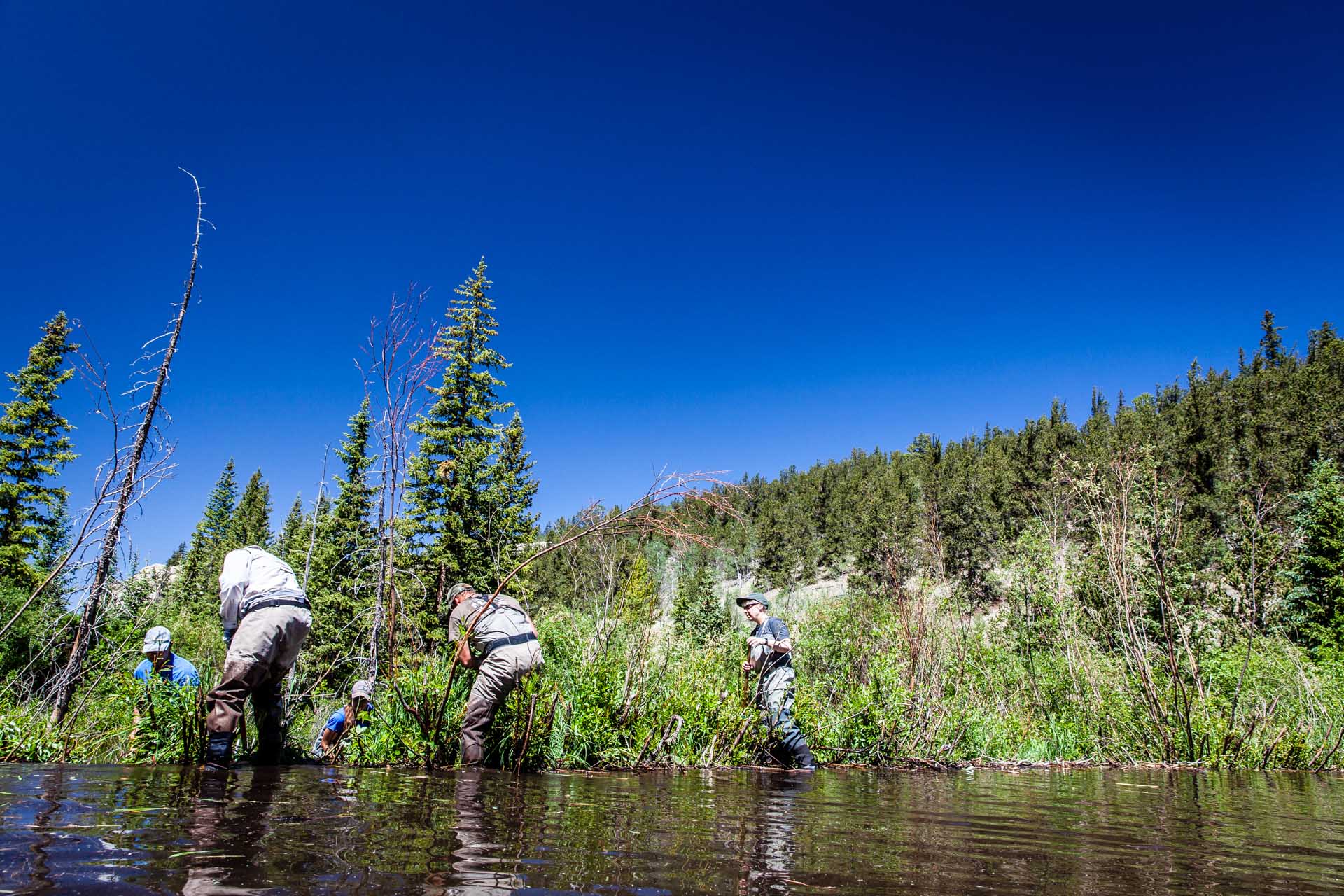

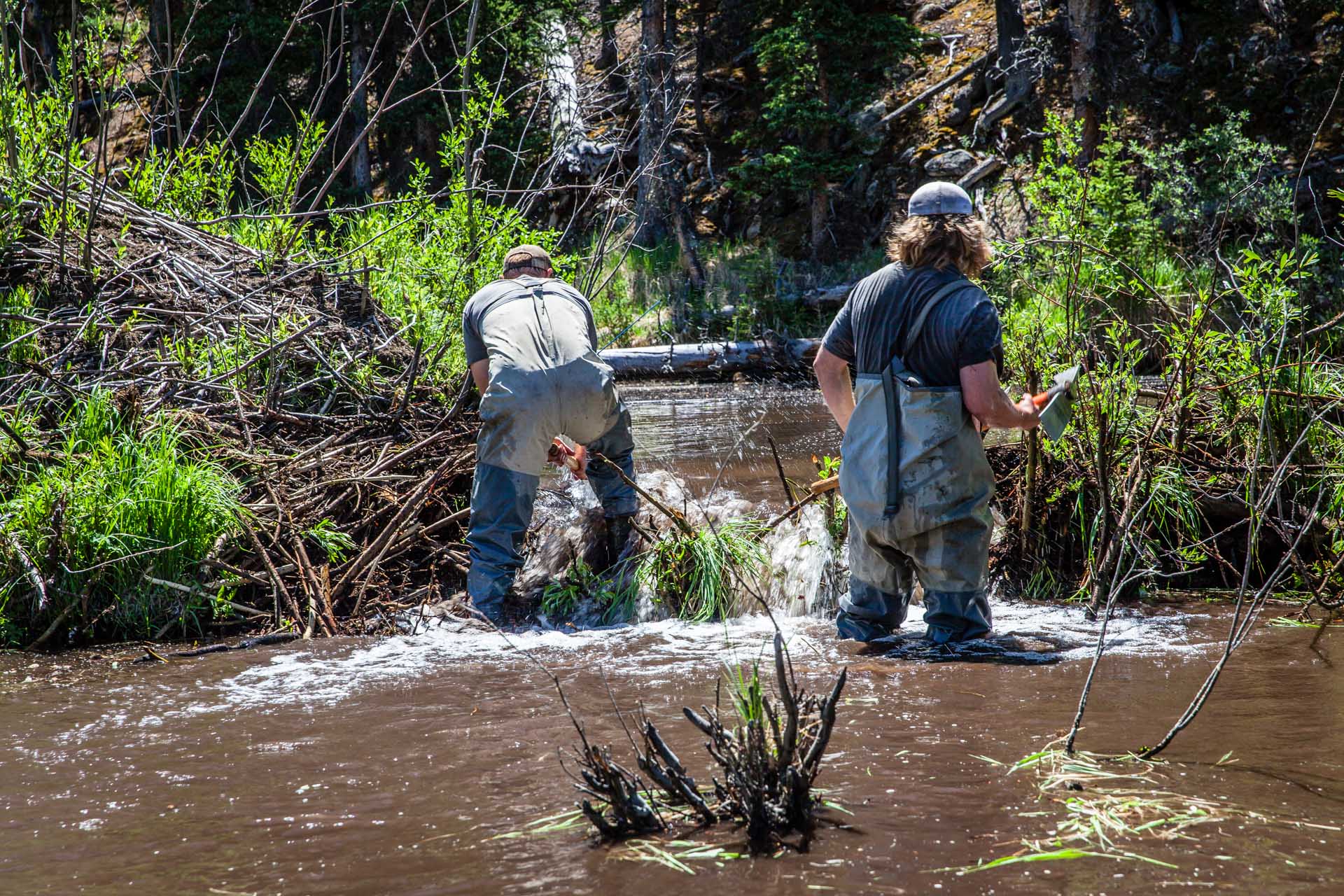
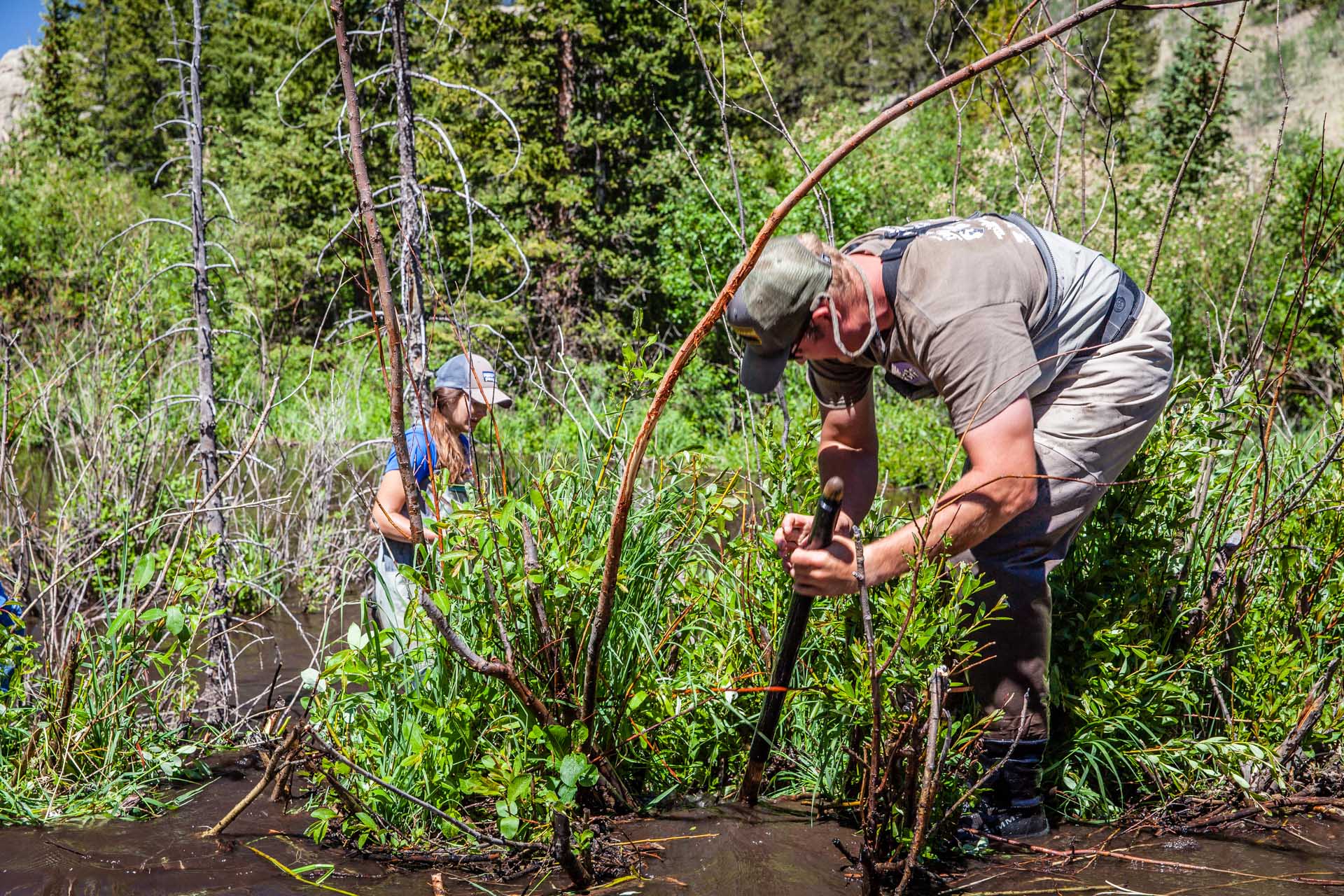
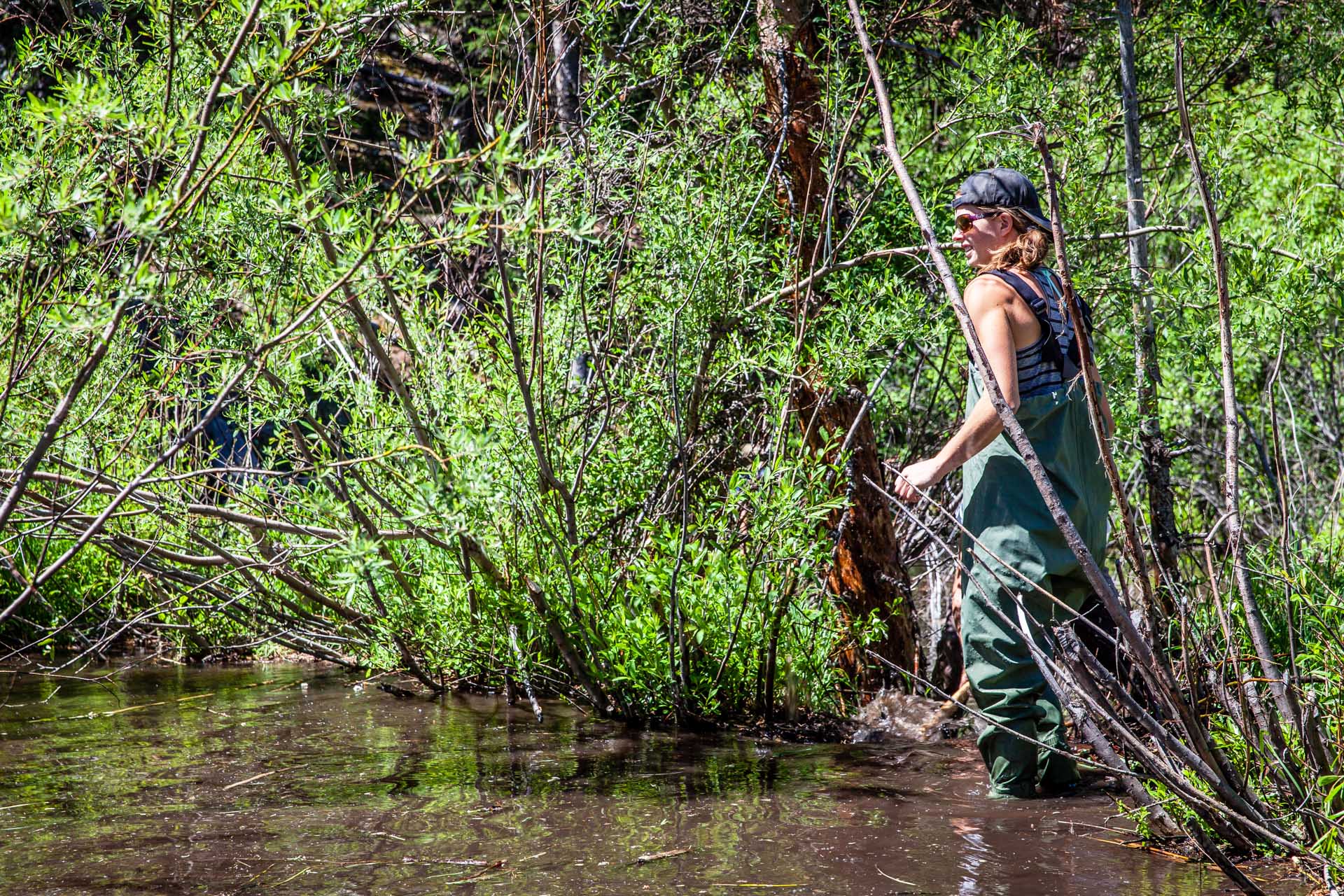
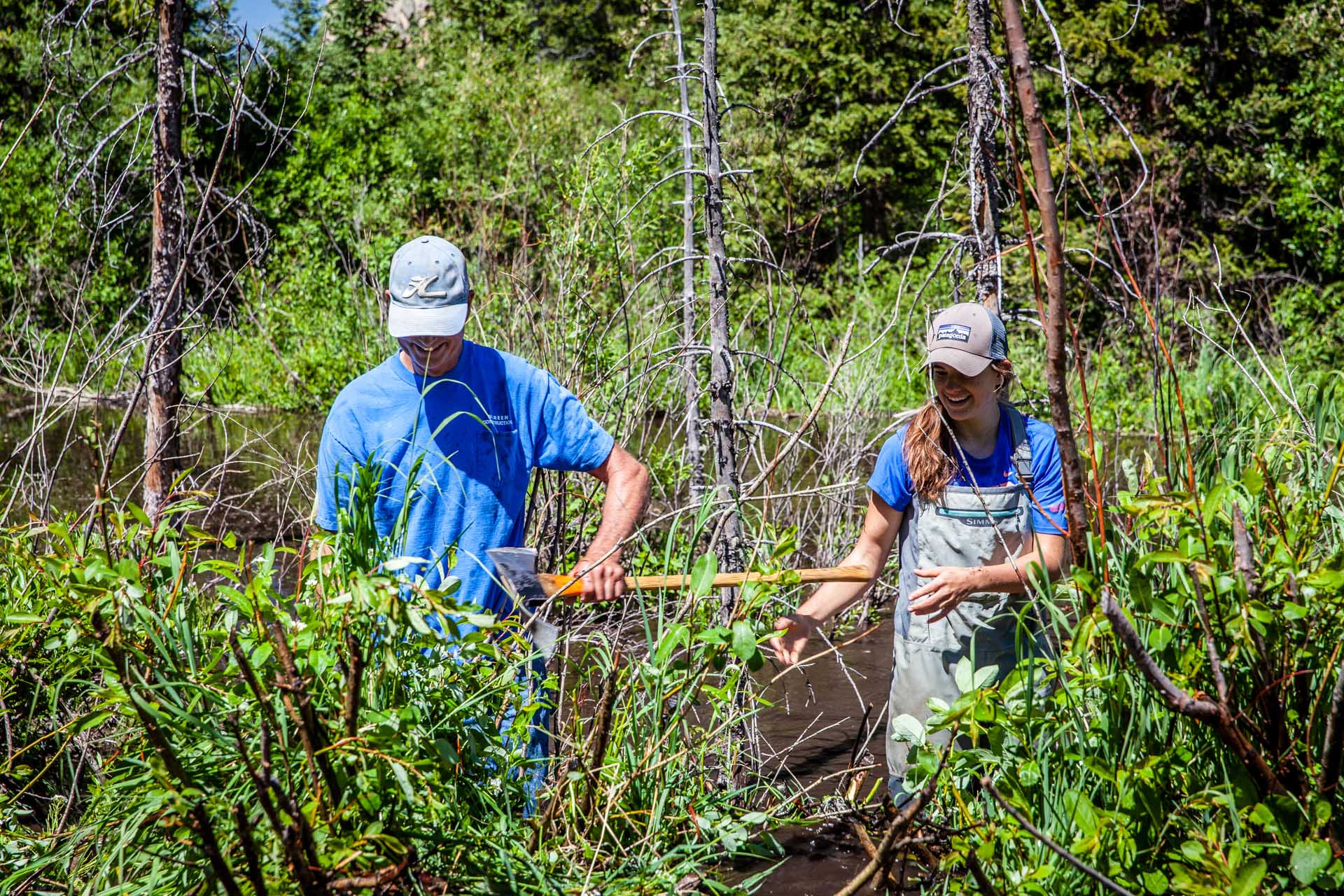
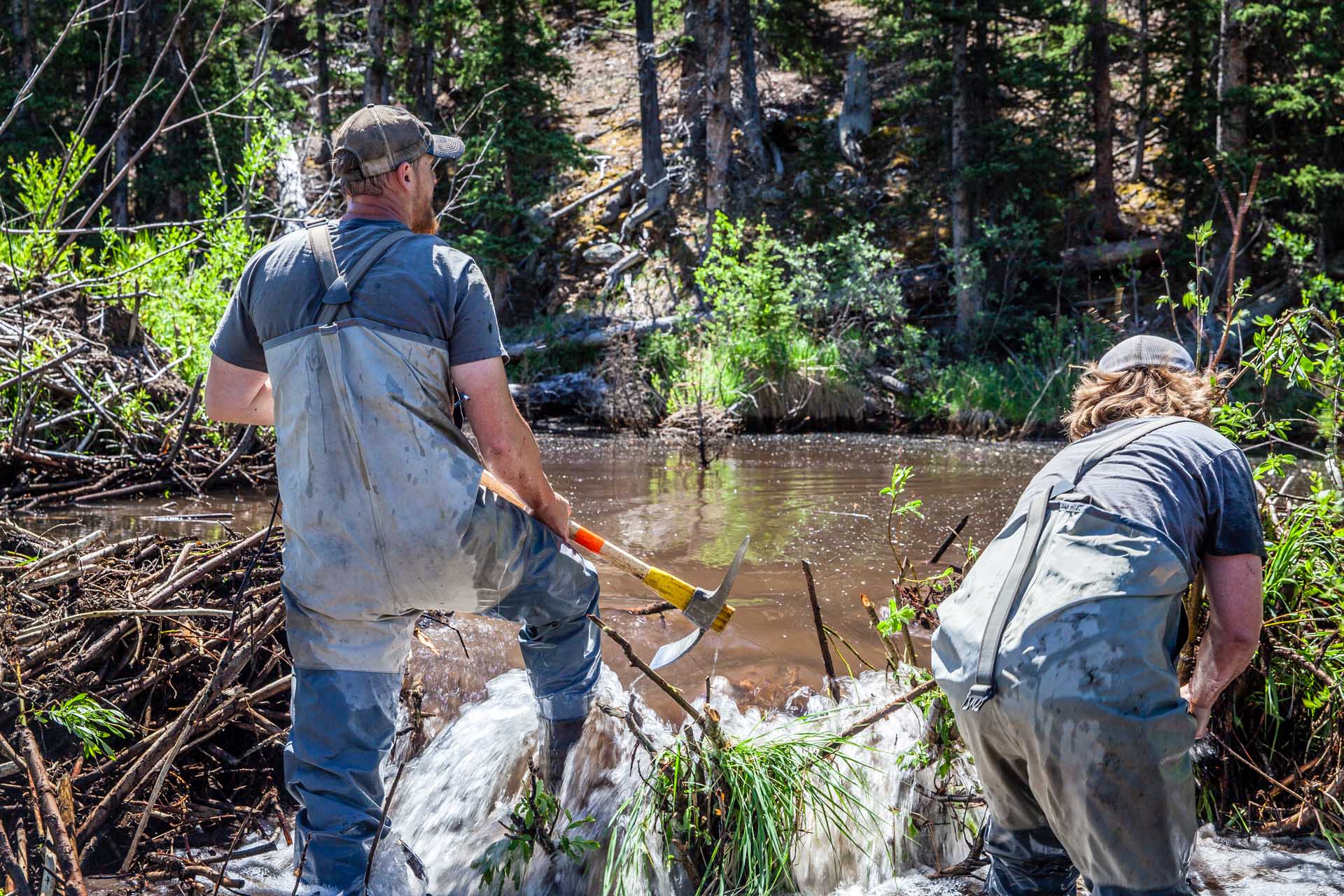

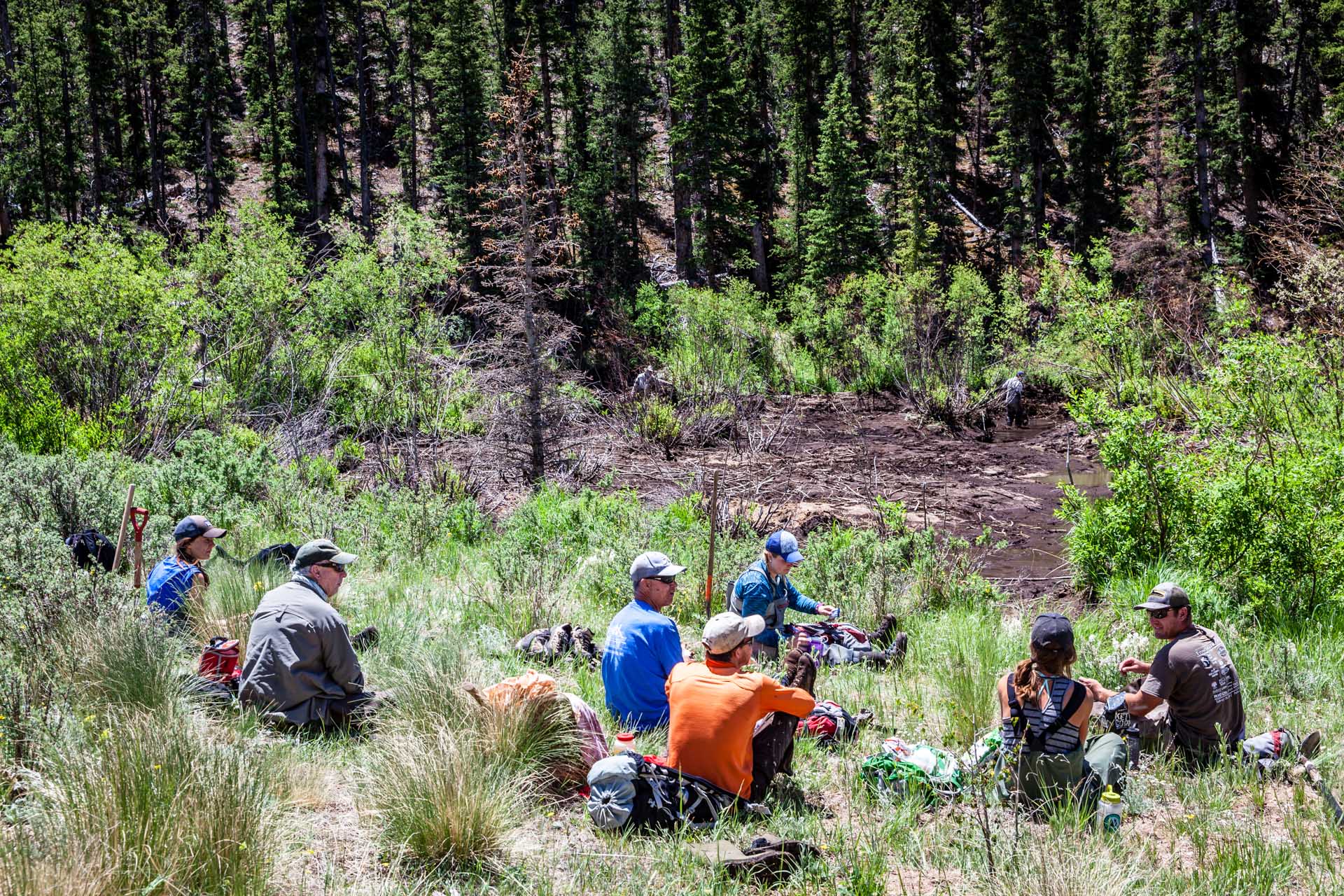
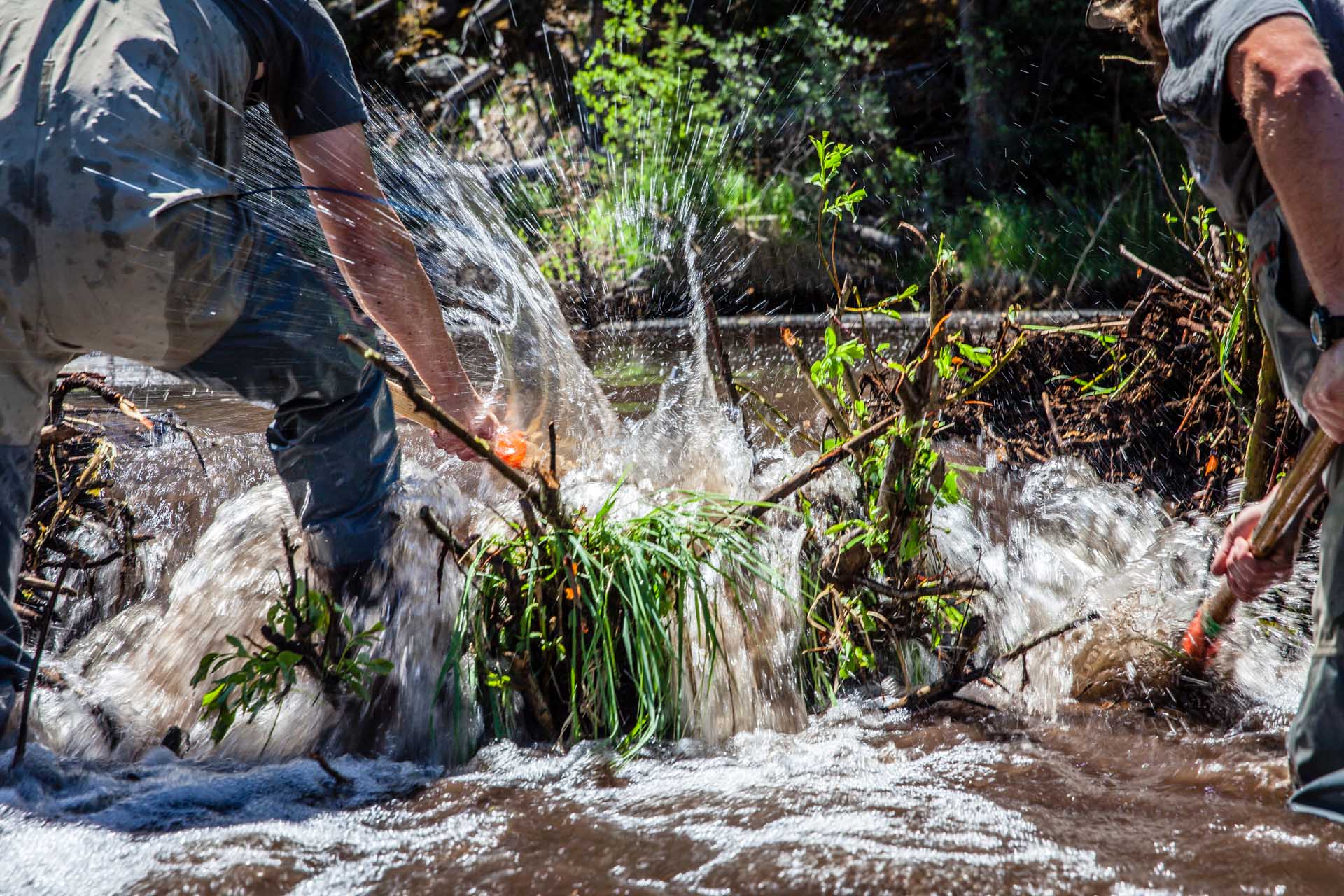
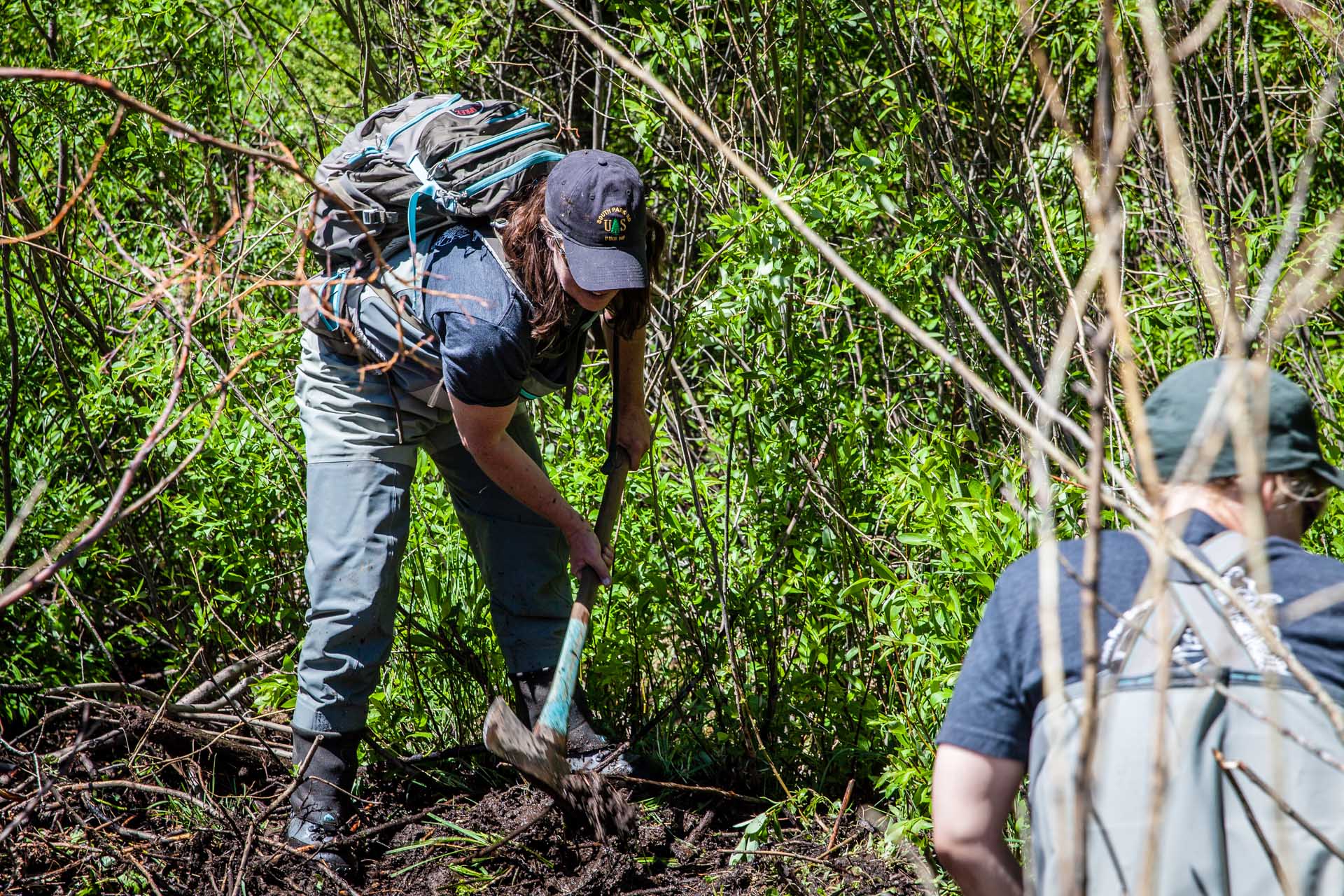
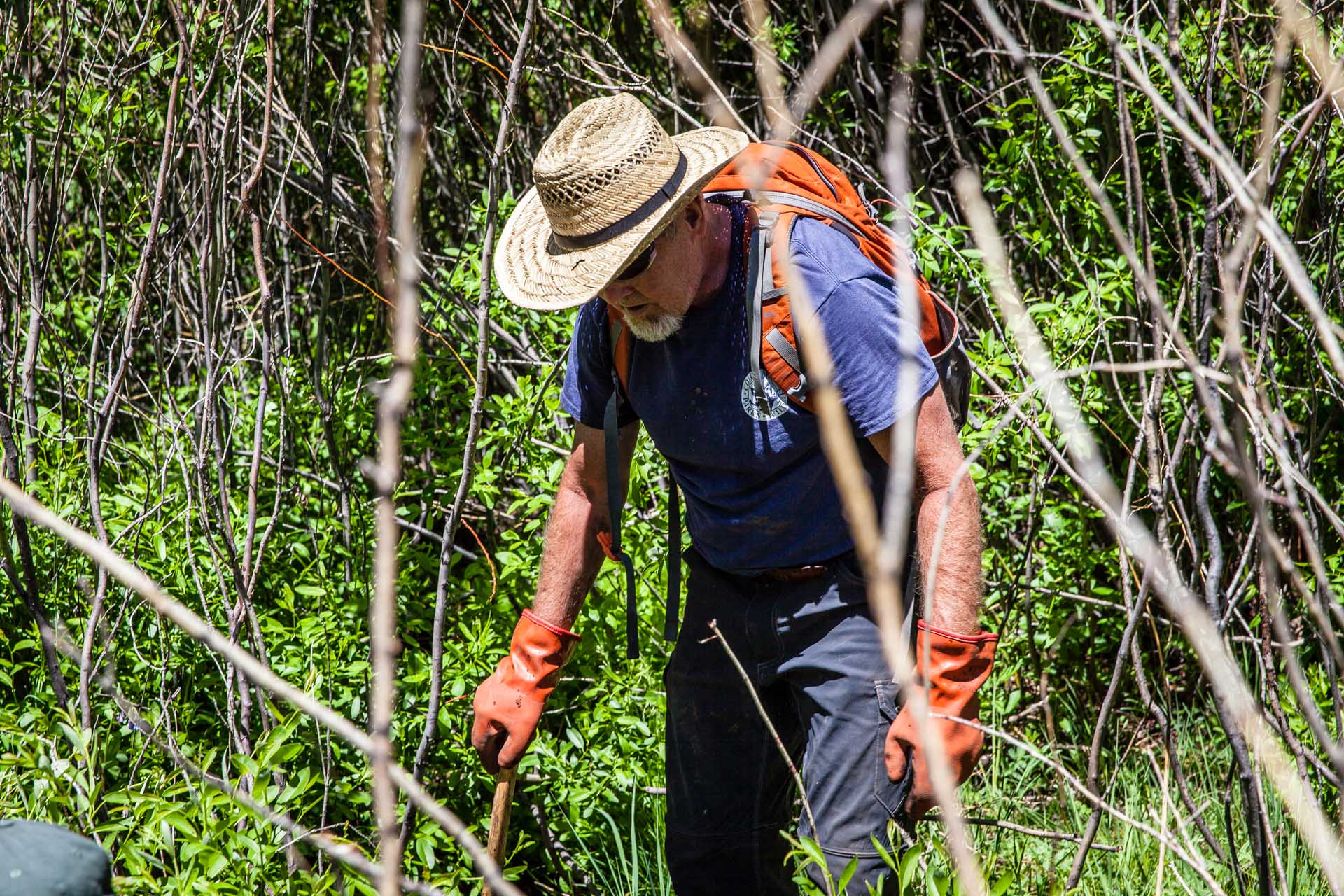
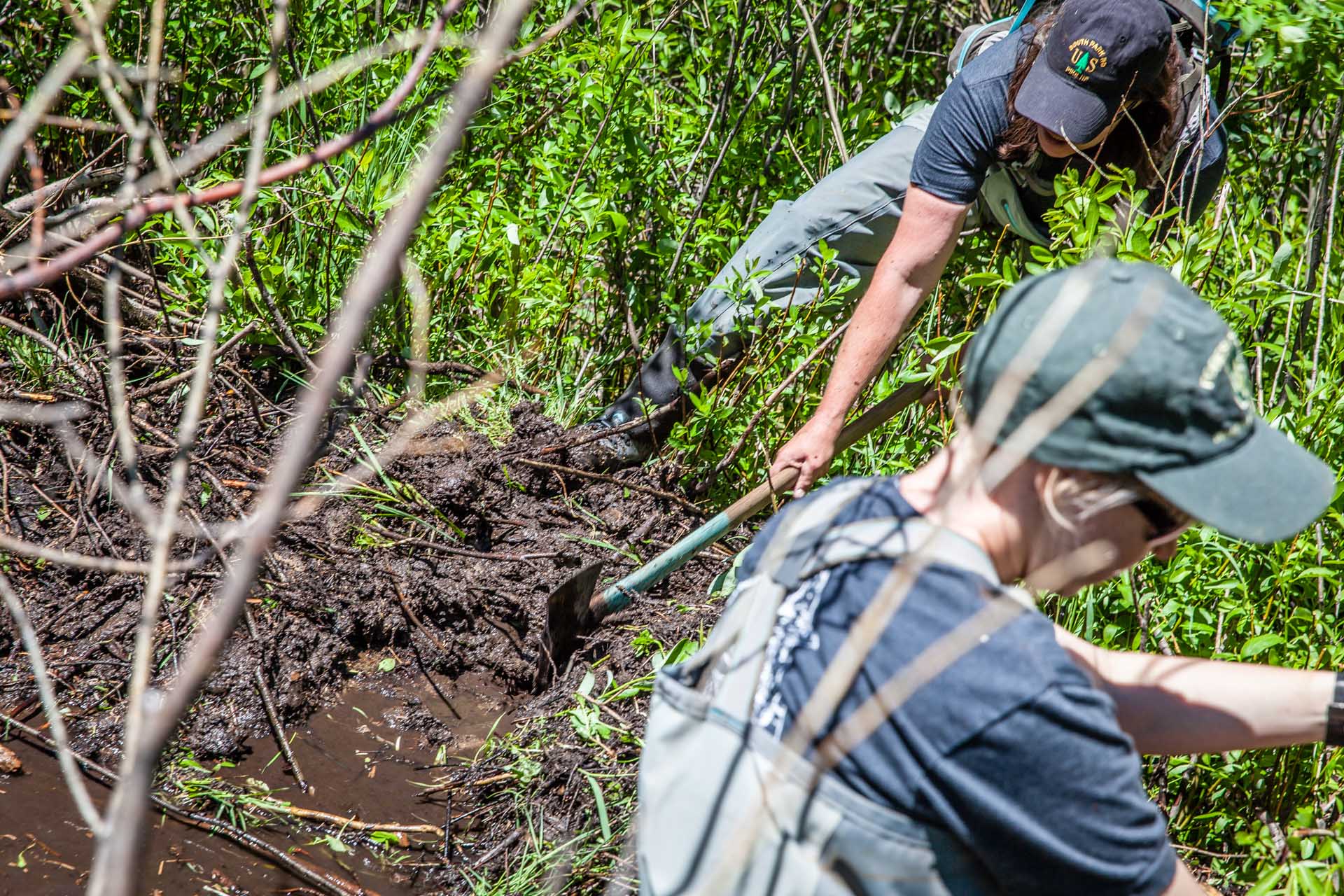
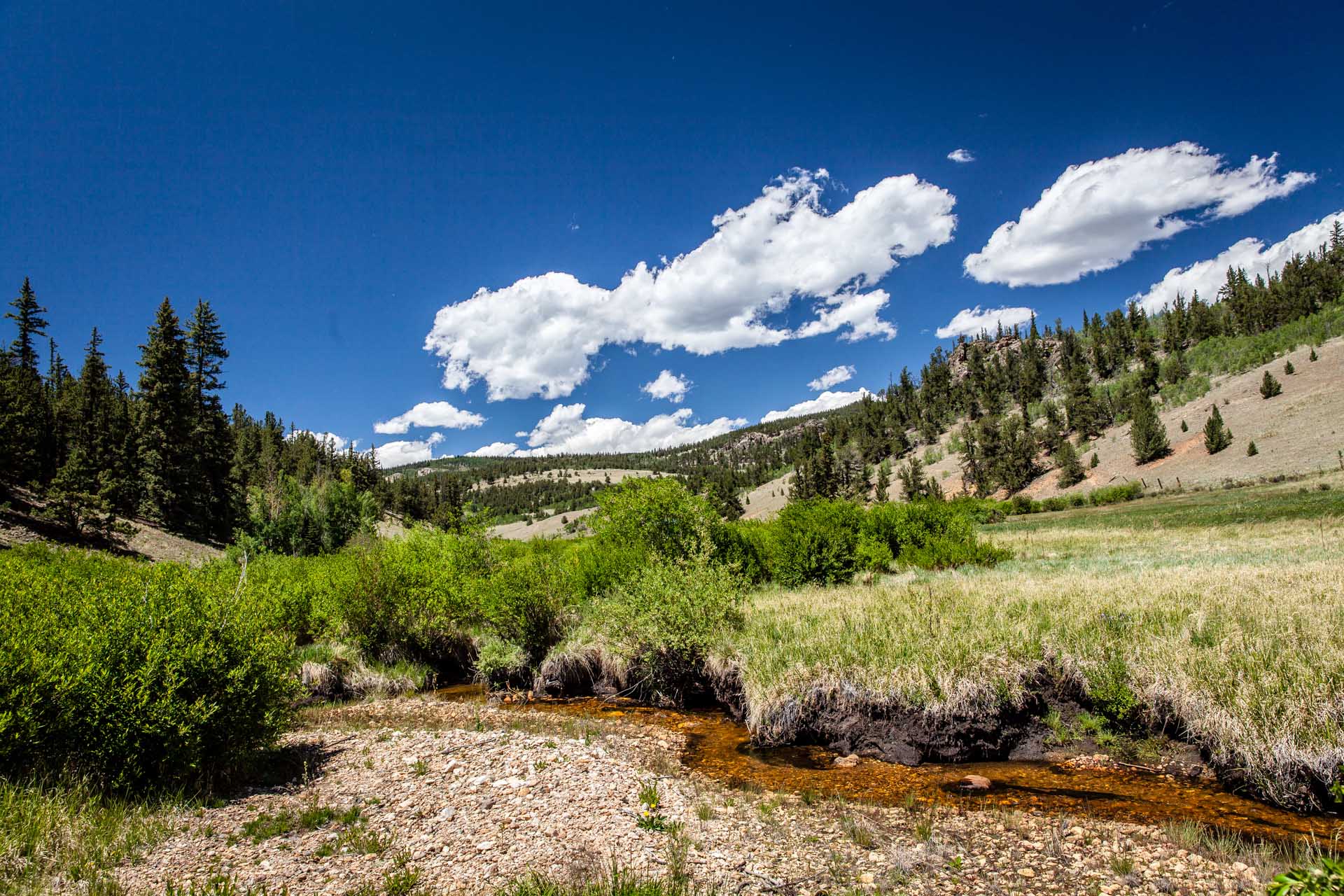
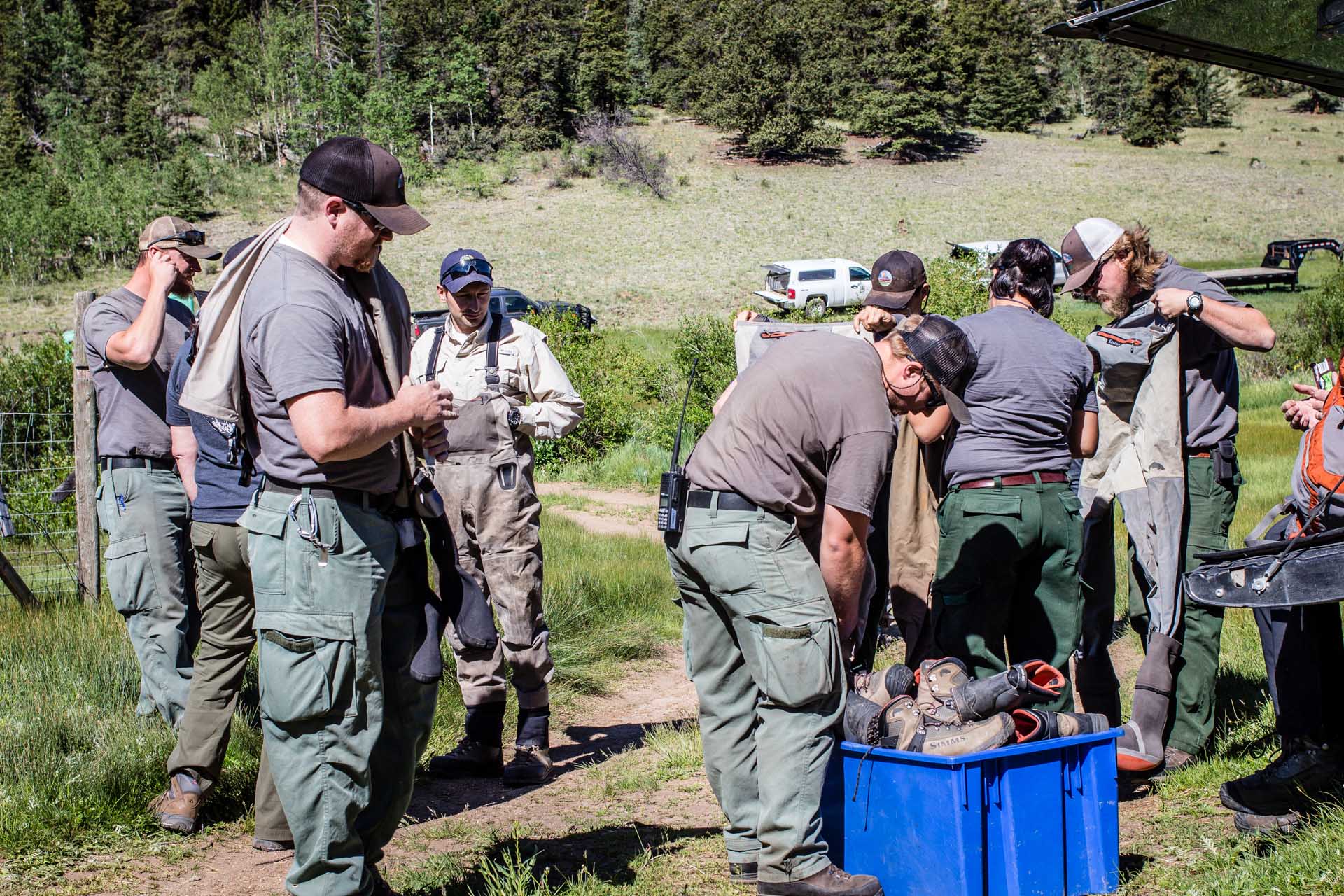
Pictures courtesy of Basin+Bend.








